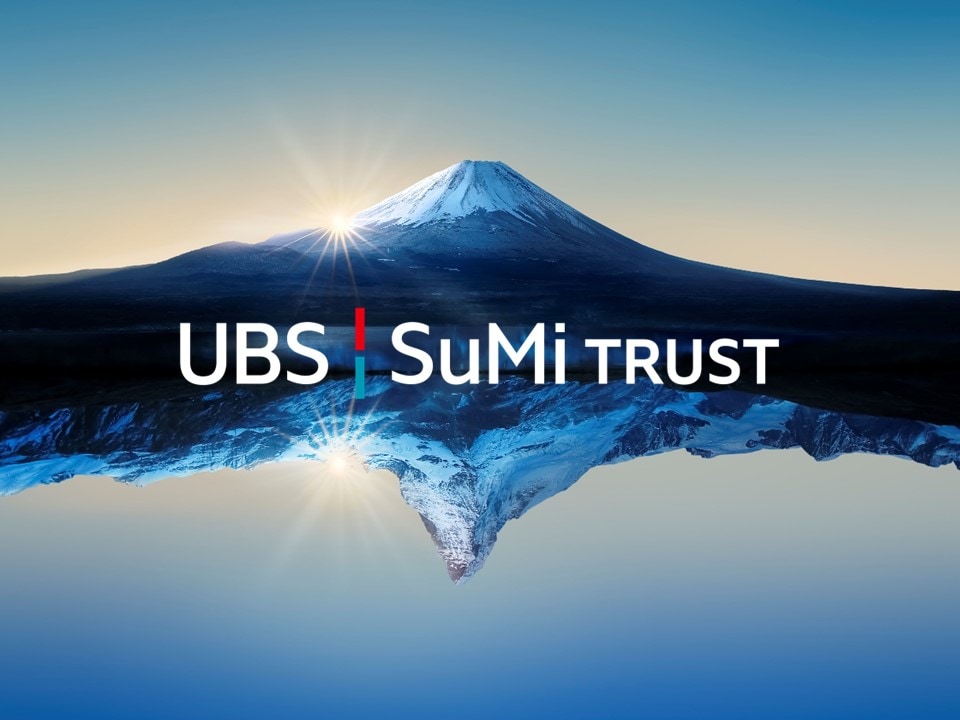UBS Virtual Museum
2000-2019
2000
The young UBS is listed on the New York Stock Exchange
The integration costs arising from the merger, and the setback due to the collapse of the large Long-Term Capital Management hedge fund, resulted in a disappointing first financial year. However, by the end of 1999 the wind was already changing to a more positive direction, and UBS was able to look to the future with optimism. In 2000, UBS announced stable financial results for the first time. And on 16 May 2000, UBS had its global registered shares listed on the New York Stock Exchange, which paved the way, two months later, for the merger with the long-established US asset management company PaineWebber Group Inc.
2000
UBS takes over US asset manager PaineWebber
On 12 July 2000, UBS and the US’s fourth-largest asset management company, PaineWebber Group Inc., announced that they would be merging at the end of November. Because the two firms operated in complementary areas of business, the alliance was equally attractive to both parties. Firstly, taking over PaineWebber would open the door to the US investment market for UBS, and, secondly, it made UBS the world’s leading asset manager: in 1999 UBS was managing customer assets worth CHF 1,744 billion, while the assets managed by the American firm totaled CHF 794 billion. In return for their shares, Paine Webber shareholders could choose between cash and UBS shares, which were reissued for this deal and were quoted on the Swiss Stock Exchange on 3 November 2000. Following its integration in 2003, the UBS PaineWebber division was renamed UBS Wealth Management USA.
2003
Alinghi team wins the 31st America’s Cup with UBS sponsorship
Sunday 2 March 2003 saw an absolutely sensational event: not only did a sailing team from the Old Continent bring the America’s Cup to Europe for the first time in the 162-year history of the oldest trophy in international sport. Even more remarkably, the winning team came from the landlocked nation of Switzerland and achieved victory the first time it entered the race. This was the Alinghi team, founded in 1994 by Geneva-based entrepreneur, Ernesto Bertarelli. In 2001, UBS signed an exclusive sponsorship deal with Alinghi, and just two years later the Alinghi–UBS partnership entered the history books. In 2007, it repeated its success in Valencia, Spain, claiming the 32nd America’s Cup as its own and bringing the coveted ”Auld Mug” home.
2007
UBS gets sucked into the global financial crisis
In the years following the takeover of PaineWebber, UBS rapidly strengthened its position on the world's biggest financial market and in emerging economies. In 2006, the Group achieved the best results in its history, but the boom would come to an abrupt end in the summer of 2007. After nine successful years, in October 2007 the firm suffered a pre-tax loss of CHF 726 million. The trigger was a drastic real estate crisis in the US, resulting in a deteriorating situation on the sub-prime mortgage market. UBS’s structured investment products, which were based on this kind of real estate loan, were particularly badly hit. In total, UBS had to write off about CHF 50 billion – its entire equity. Trading difficulties were also increasing at other financial institutions. On 15 September 2008, the US investment bank Lehman Brothers filed for insolvency. The collapse of this long-established bank triggered a domino effect.
2008
Saving UBS
On 16 October 2008, UBS reached an agreement with the Swiss government and the Swiss National Bank that enabled it significantly to reduce the risks on its balance sheet. As part of the solution, a fund would be set up by the Swiss National Bank to buy up illiquid securities held by UBS to the value of up to USD 60 billion, to reduce the pressure on UBS’s balance sheet. During 2007 and 2008, UBS succeeded in raising, in a number of stages, capital amounting to CHF 42.5 billion and so was able to keep its core capital ratio at between 10% and 12%. The main cause of the huge losses was the involvement by the Investment Bank, spurred on by ambitious growth targets, in US mortgage-backed securities and asset-backed securities.
2011
UBS launches the UBS Kids Cup, the most successful program for young talent in Swiss sport
In the 2022 season, the Swiss stars of athletics shone more brightly at international championships than ever before. UBS had laid the foundations for their unprecedented success on the medal table eleven years earlier, when, together with Swiss Athletics and the organizers of Weltklasse Zürich, it inaugurated the UBS Kids Cup, a program to encourage people all over Switzerland to get more exercise. Since the launch of this series of events, in which boys and girls compete in the disciplines of 60 m sprint, long jump and ball throwing, around 1.5 million children and young people have taken part. Many of them were spotted there as promising new talents and were supported from then on until they joined the ranks of potential medal winners. Click here to find out more about the program for young talent.
2011
2011 UBS embarks on Formula One sponsorship
Following its recovery after the financial crisis and the resulting far-reaching culture change, UBS wanted to reposition itself with sponsorship deals that demonstrated its renewed confidence. During the 2010 Grand Prix season, UBS decided to make a careful start by becoming a global sponsor for Formula One motor racing. One year later, UBS committed itself to top-flight motorsport, giving it a global brand presence at all races. In addition to boosting brand recognition and enhancing its image in growth regions, UBS also benefited from the media presence, from a high-profile platform for offering hospitality and from an increase in new business.
2011
Lasting transformation at UBS
The first sign of the turnaround after the financial crisis came in the fourth quarter of 2009: UBS was in profit again and had reduced its balance sheet total and risk positions by 50% compared with 2007. With its stronger capital base, it satisfied the stricter regulatory requirements. When there was a further setback in September 2011, the new Group Executive Board reacted by speeding up the consistent implementation of the new strategy and organization structure, and this also marked the start of a far-reaching cultural change within the bank. At the center of the new business model were a globally focused wealth management business and a universal bank for Switzerland, which would be supported by global asset management capabilities and a less complex and less capital-intensive investment bank.
2017
UBS becomes the new presenting partner for SwissSkills
The SwissSkills foundation, which was established in 1953, at the international WorldSkills competition in Madrid, provided publicity about the dual vocational education system for which Switzerland is famous around the world. In 2017, in order to position vocational apprenticeships as an excellent career launchpad, and in partnership with the State Secretariat for Education, Research and Innovation, the Swiss Employers’ Association, the Swiss Trade Association, UBS and the Ringier publishing house, it launched the SwissSkills initiative. UBS is one of the biggest providers of apprenticeships in Switzerland, and so it strongly supports the dual vocational education system. This is why UBS, the largest bank in Switzerland, serves as the presenting partner.
2019
Strategic partnerships
UBS’s continuing focus on exploring potential growth areas in Asia led it, in June 2019, to enter into a strategic wealth management partnership with Japan’s biggest trust banking group, the Sumitomo Mitsui Trust. The joint venture, in which UBS has a 51% holding, offers products, investment advice and services for high net worth and ultra high net worth private clients that the banks had not previously been providing separately. In the same year, UBS and Banco do Brasil signed an agreement to set up a leading investment bank in South America in which UBS would be the majority shareholder.






























